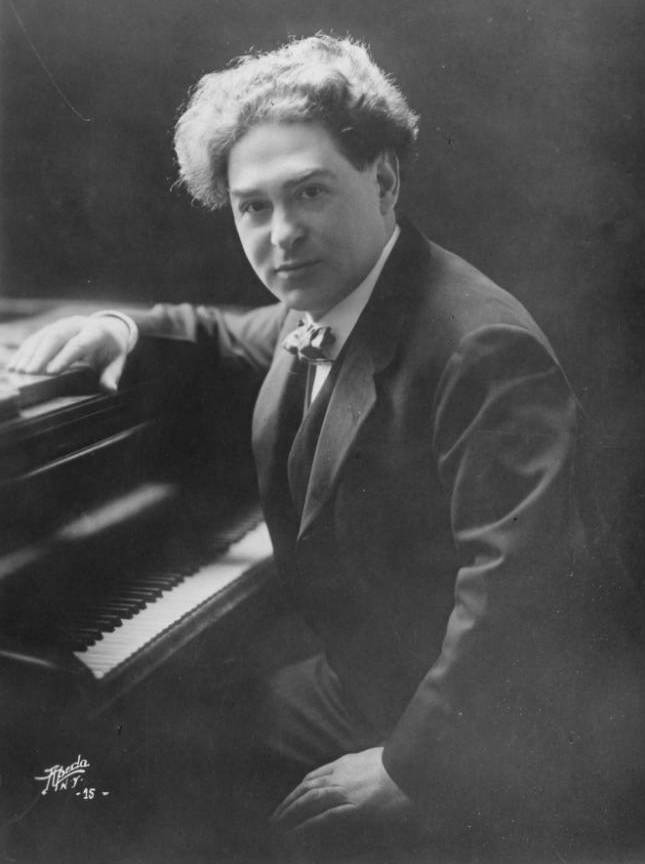Harold Bauer
He was one of Schubert Club’s most popular artists during the decades between the two wars. Harold Bauer was performing as a violinist in his native England before being taken under the wing of Paderewski. That legendary keyboard virtuoso coached him in Paris and encouraged Bauer to pursue a piano career. He launched it in 1895 with two hugely acclaimed concerts in Berlin, the first including Beethoven’s “Emperor Concerto”. This 1934 NBC broadcast of that concerto’s opening movement is Bauer’s only known recording with orchestra:
Bauer was still living in Paris – where he would give the first performance of Debussy’s Children’s Corner and “Ondine” from Gaspard de la Nuit, which Ravel dedicated to him – when he made his US debut in 1900, playing Brahms’s D minor Concerto with the Boston Symphony. By 1925, when he made his Schubert Club debut, he had founded his own successful concert series in New York and had become an American citizen. Bauer was an outstanding chamber player, partnering with such luminaries as Kreisler, Casals, Ysaÿe and Osip Gabrilowitsch (see his Artist Archive entry for their incomparable recording of a piano duet by Arensky). Bauer’s solo programs were always substantial. He introduced works by Debussy and Ravel to the American public and included those composers in all three of his Schubert Club programs. He played Debussy’s “Clair de lune” in the first of them and made this recording of it in 1929:
Bauer was also a superb interpreter of Classical and Romantic repertoire, most famously of Schumann, Chopin and Brahms. As the piano authority Harold Schonberg put it: “He had the taste and imagination to adapt his romanticism to the 20th century.” This selection of his recordings from “The Piano Files” website includes a live performance of Chopin’s Scherzo No. 3, which Bauer played in two of his Schubert Club recitals:
Perhaps the most memorable example we have of Harold Bauer’s “romantic-modern hybrid” style is this benchmark studio recording of Brahms’s F minor Sonata from 1939, the very year in which he performed it at his third Schubert Club appearance:
Artist Note by Richard Evidon
From the Schubert Club Archive:
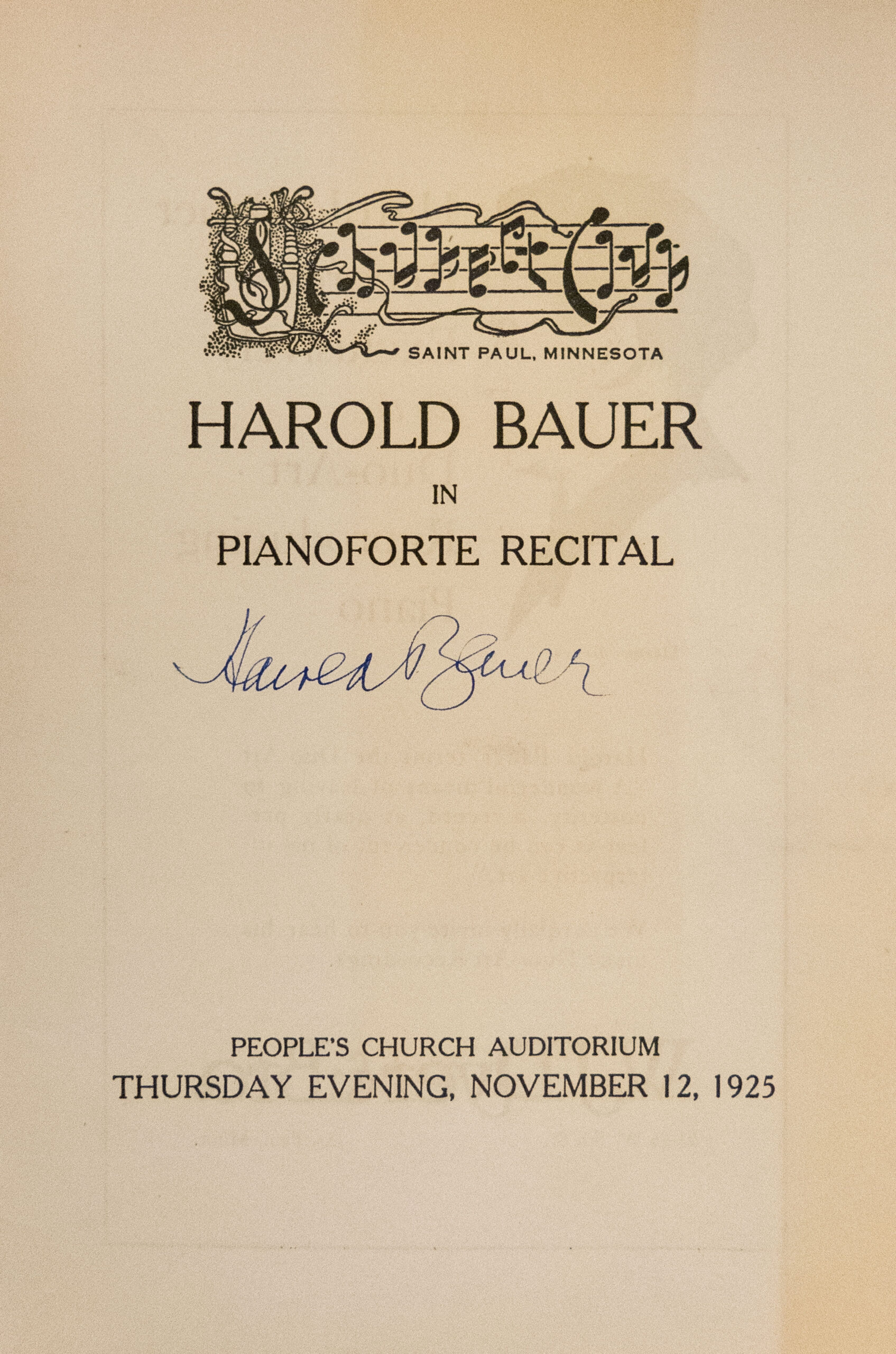
Signed program from Bauer’s 1925 performance at People’s Church
Click to View Full Image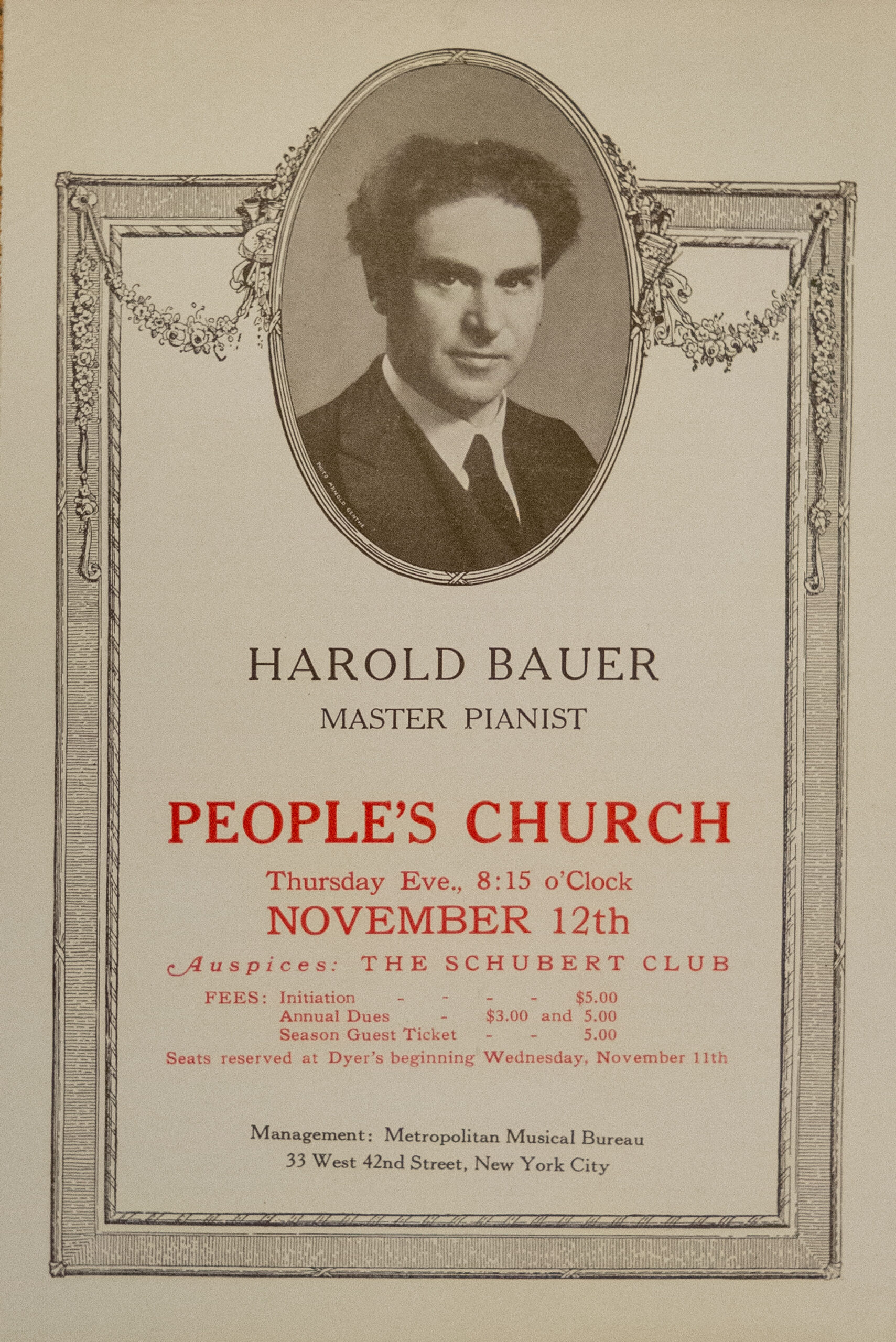
Promotional flyer for Bauer’s 1925 concert
Click to View Full Image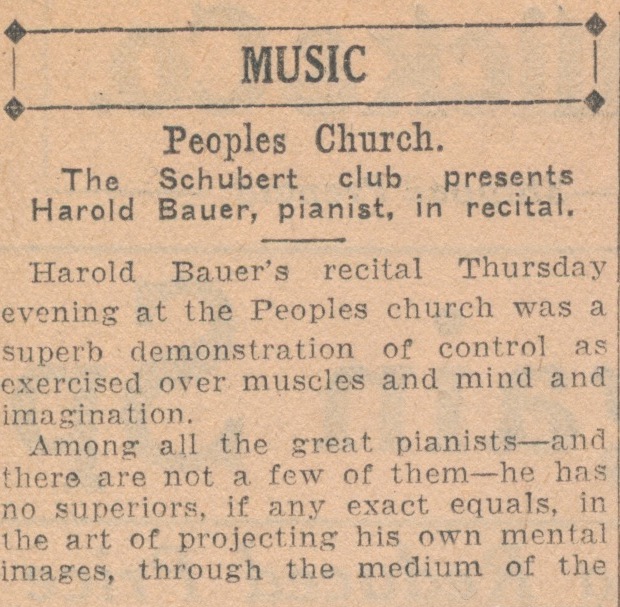
Review of Bauer’s 1925 performance in the St. Paul Pioneer Press
Click to View Full Image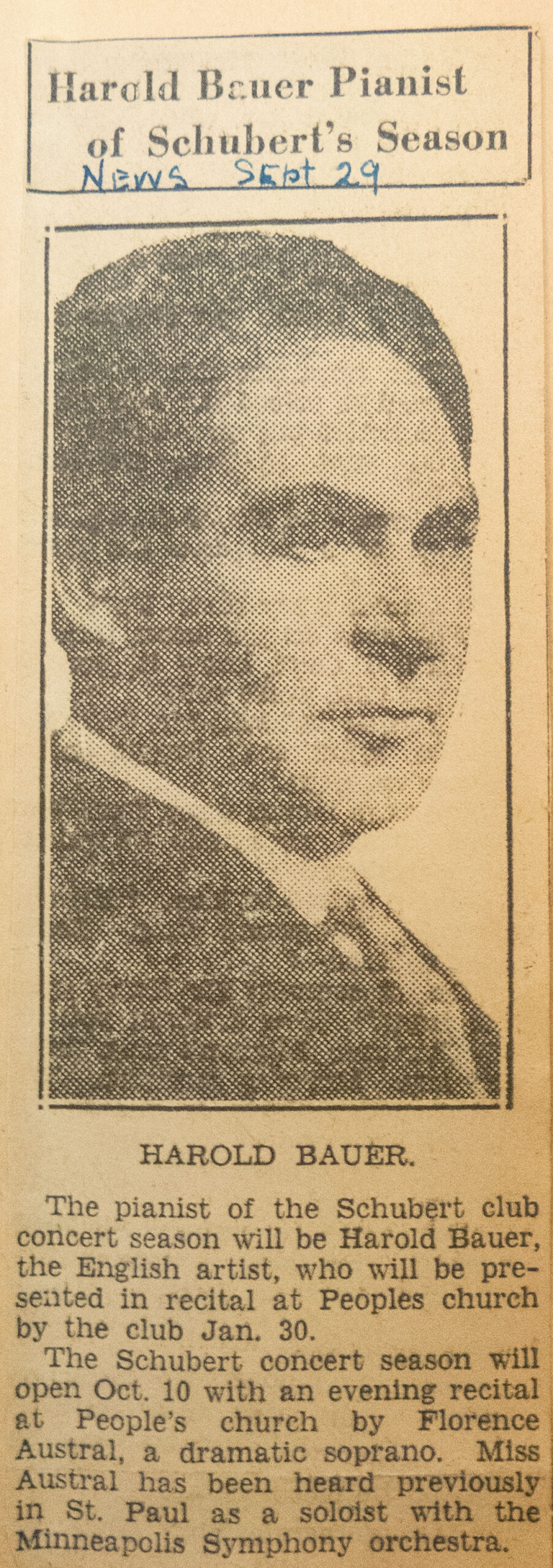
Announcement of Bauer’s January 1930 concert in the St. Paul Daily News
Click to View Full Image
Advertisement for Bauer’s 1930 concert in the St. Paul Pioneer Press
Click to View Full Image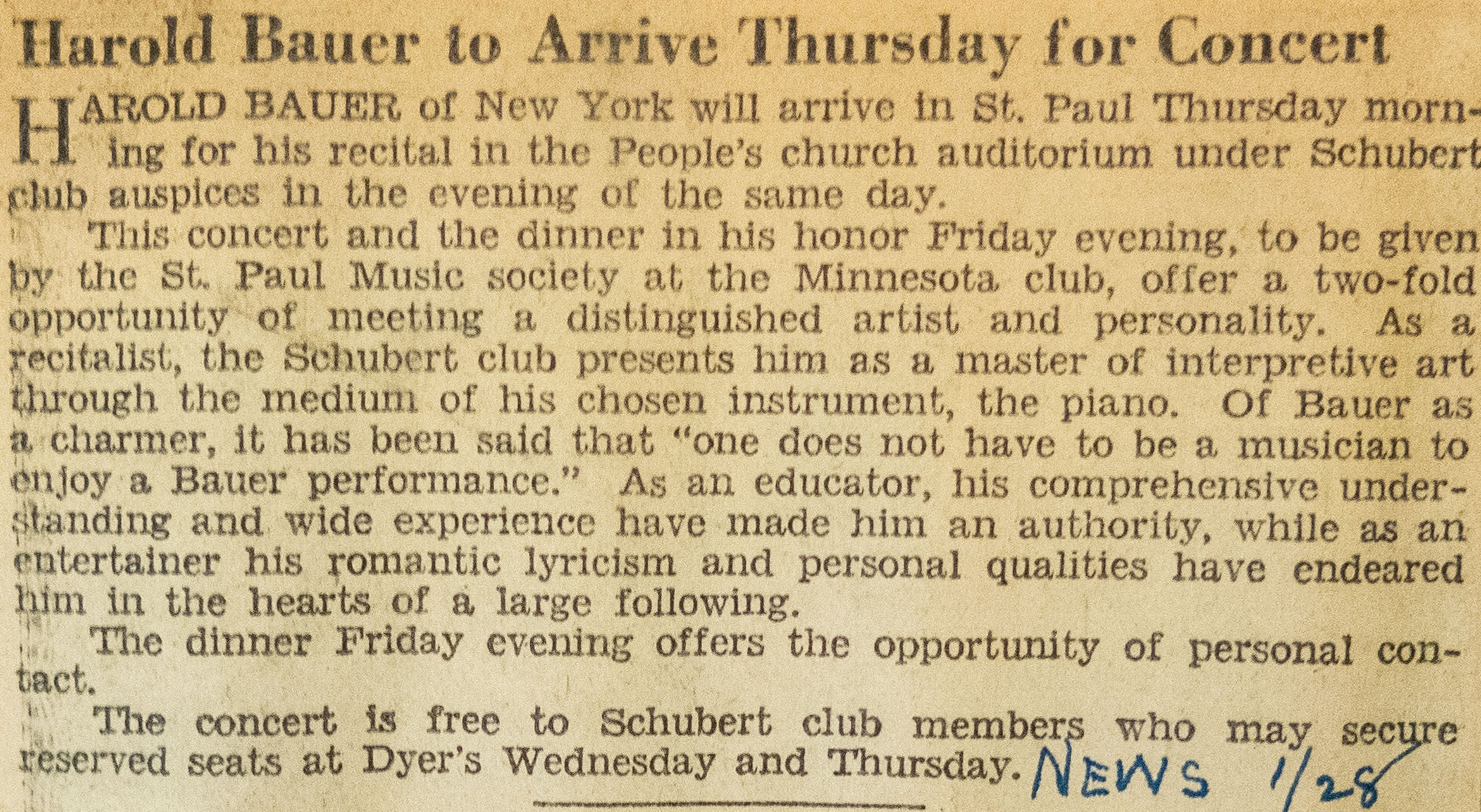
Clippings from the St. Paul Daily News and Pioneer Press promoting Bauer’s 1930 concert, as well as the post-concert reception at the Minnesota Club which offered the “opportunity for personal contact” with the pianist
Click to View Full Image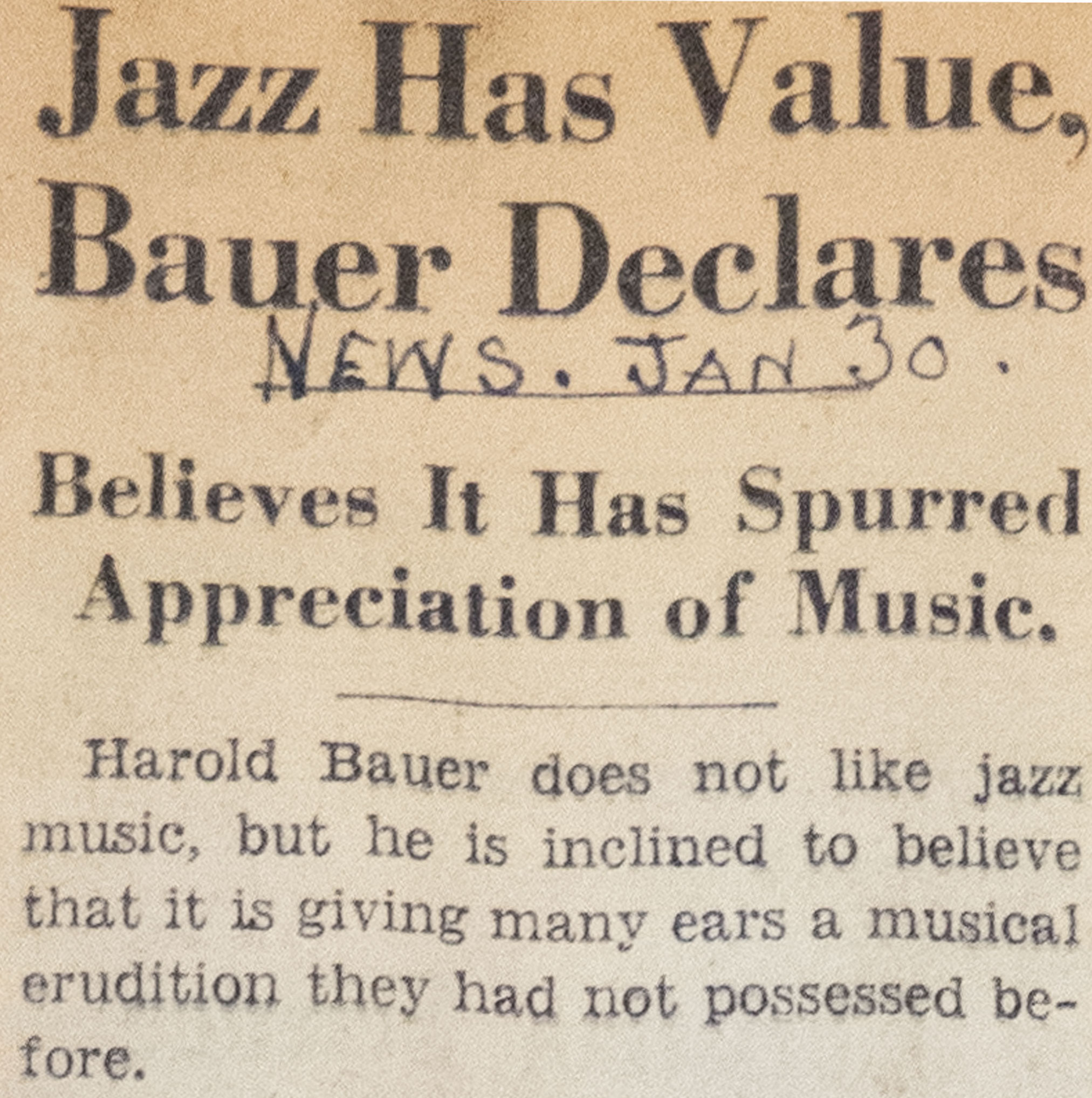
Fascinating article from the St. Paul Daily News sharing Bauer’s opinions on the growing American genre of jazz. While he saw its educational value, he equated jazz composers with “a gentleman with the strange habit of climbing through transoms instead of going through doors.”
Click to View Full Image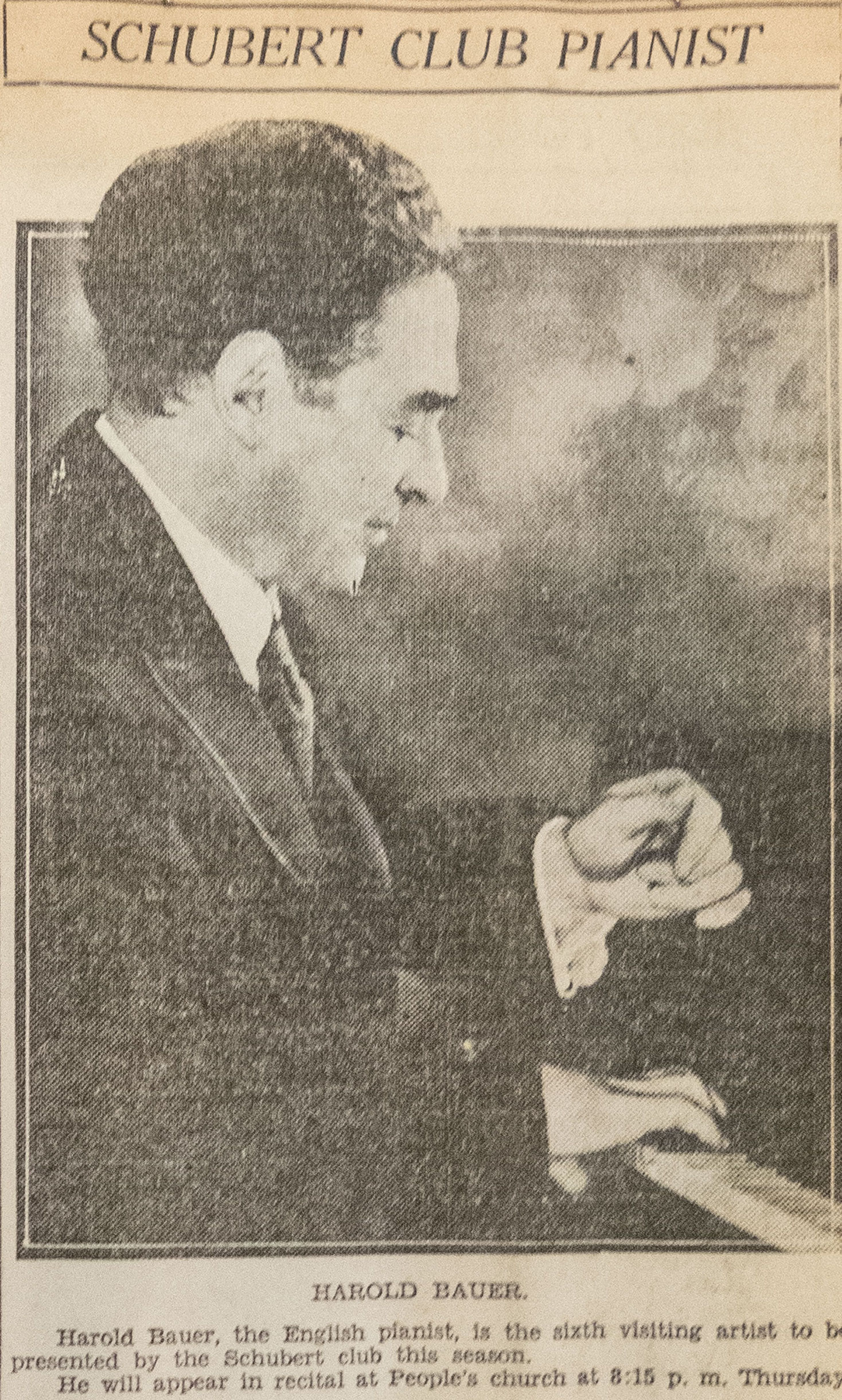
Profile article of Bauer in the St. Paul Daily News ahead of his 1930 concert
Click to View Full Image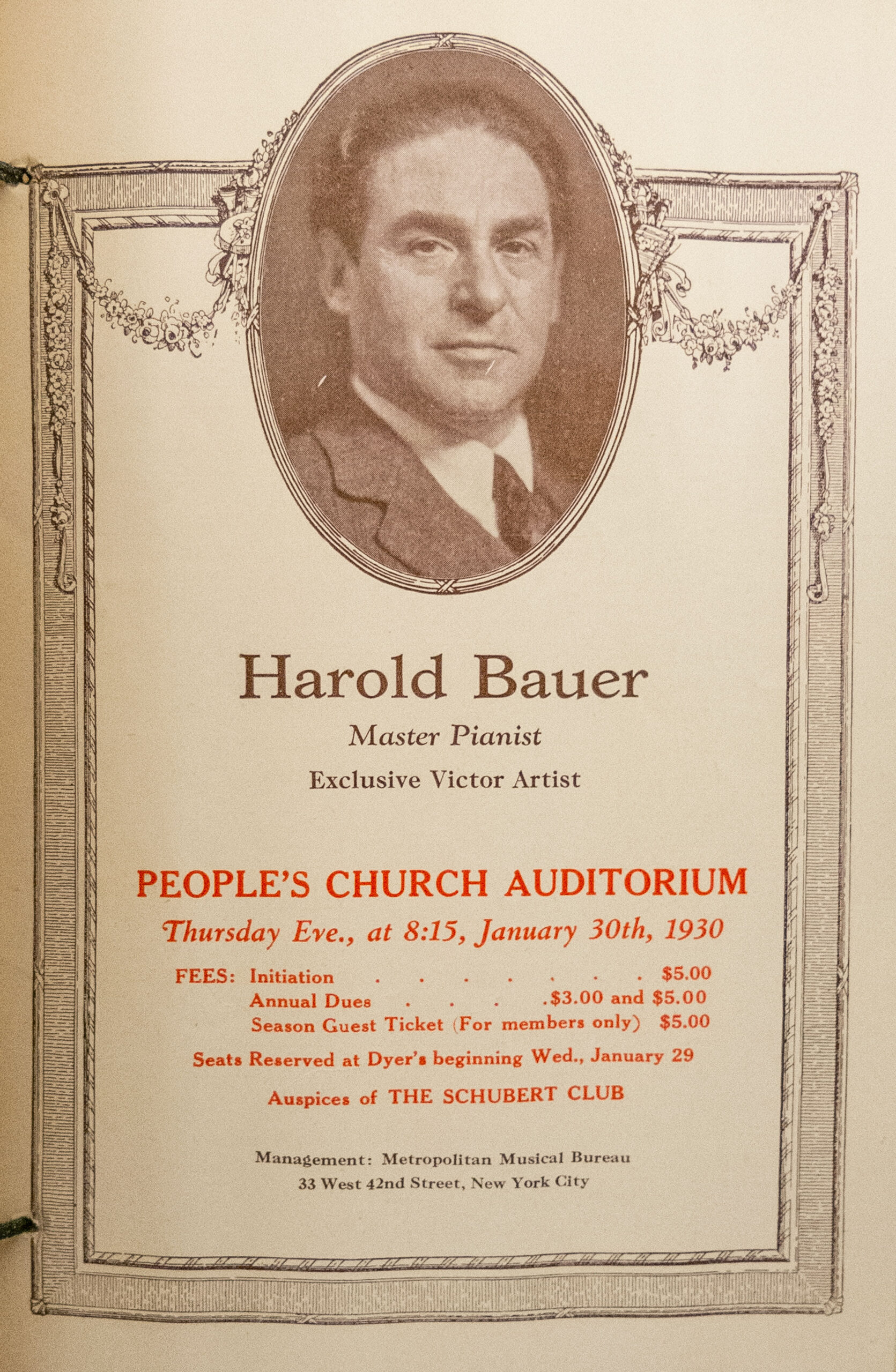
Promotional flyer for Bauer’s 1930 concert at People’s Church
Click to View Full Image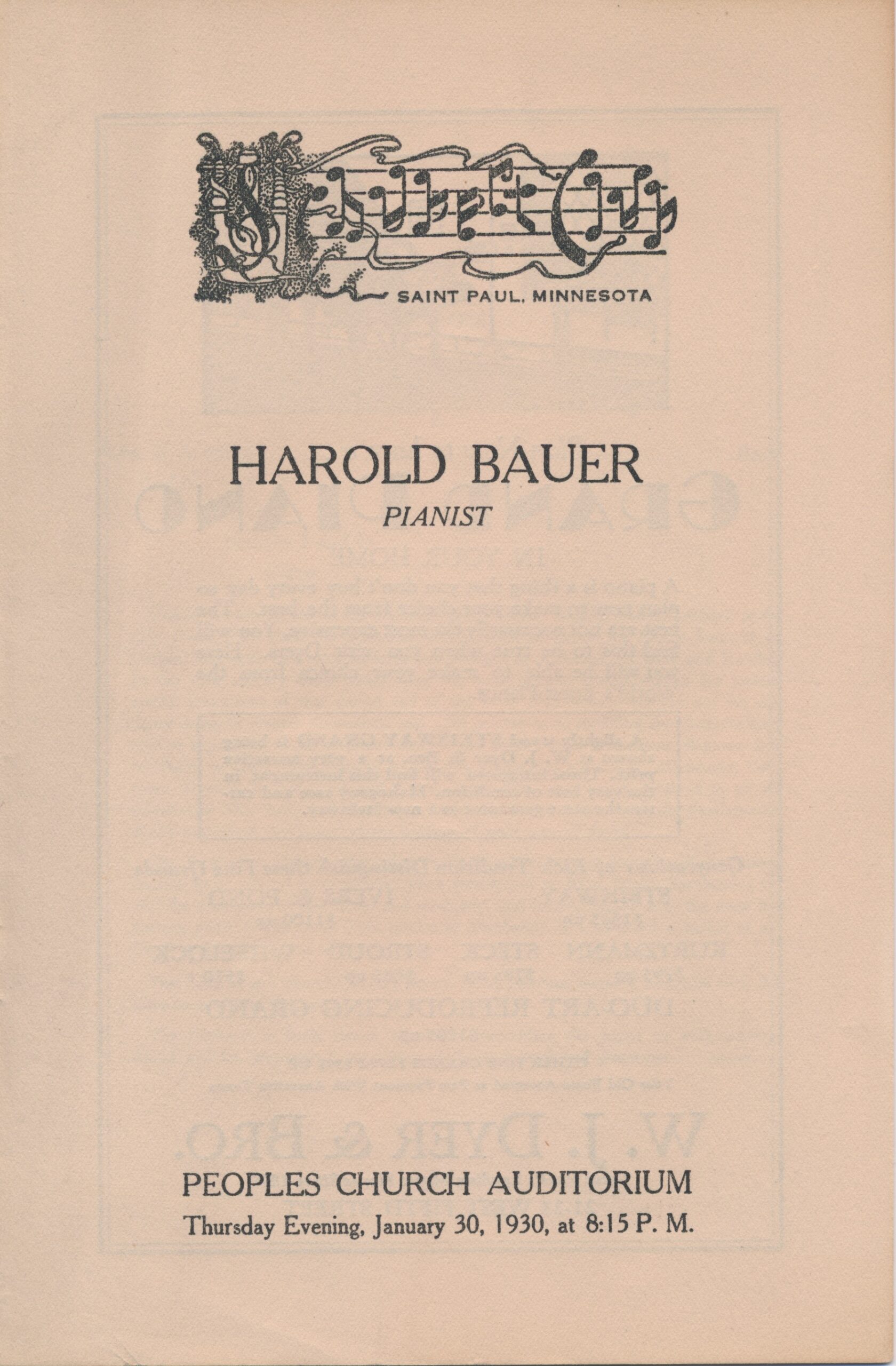
Cover of the program from Bauer’s 1930 concert
Click to View Full Image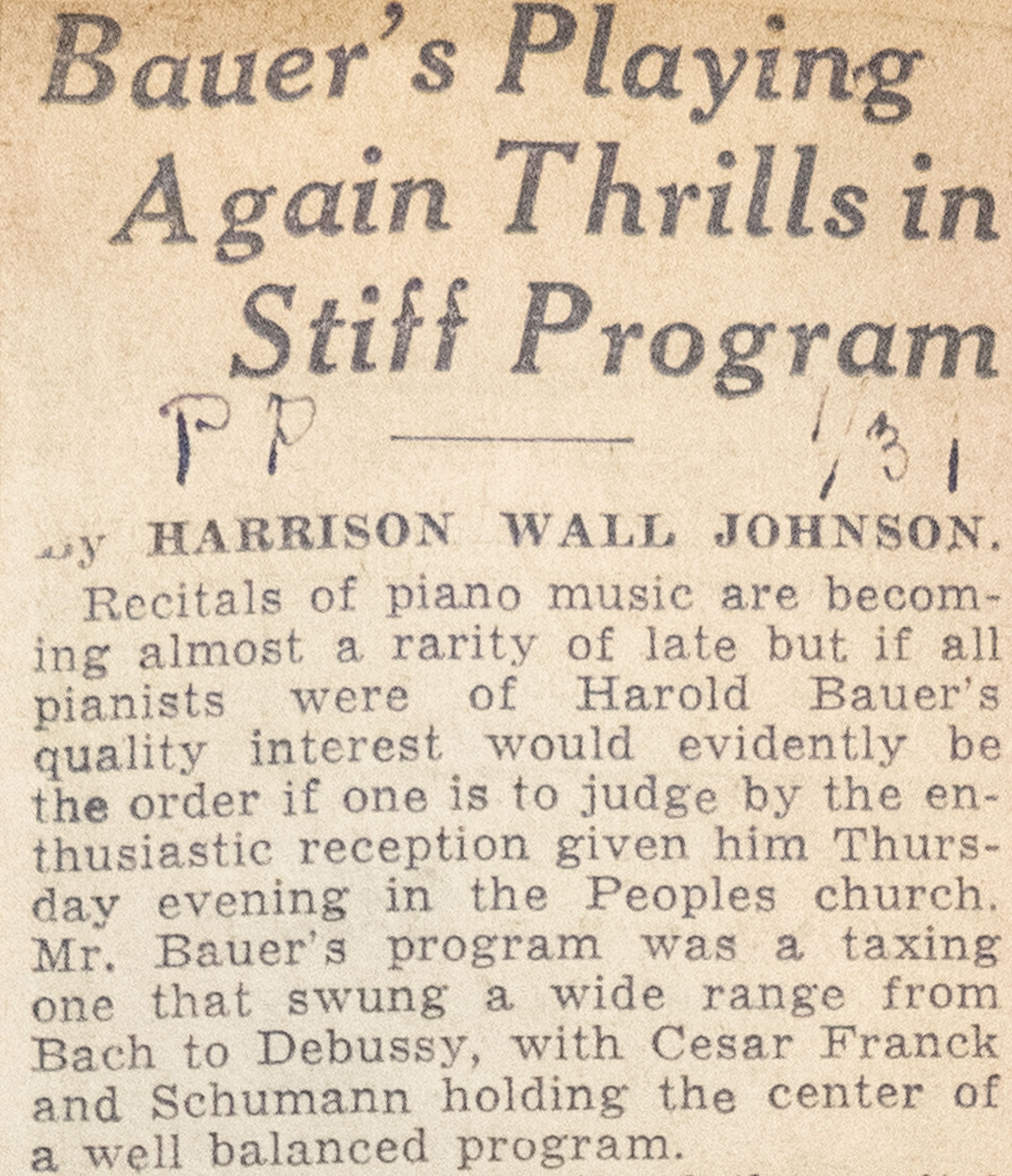
Review of Bauer’s 1930 performance in the St. Paul Pioneer Press
Click to View Full Image
Artist lineup for the 1929-30 season
Click to View Full Image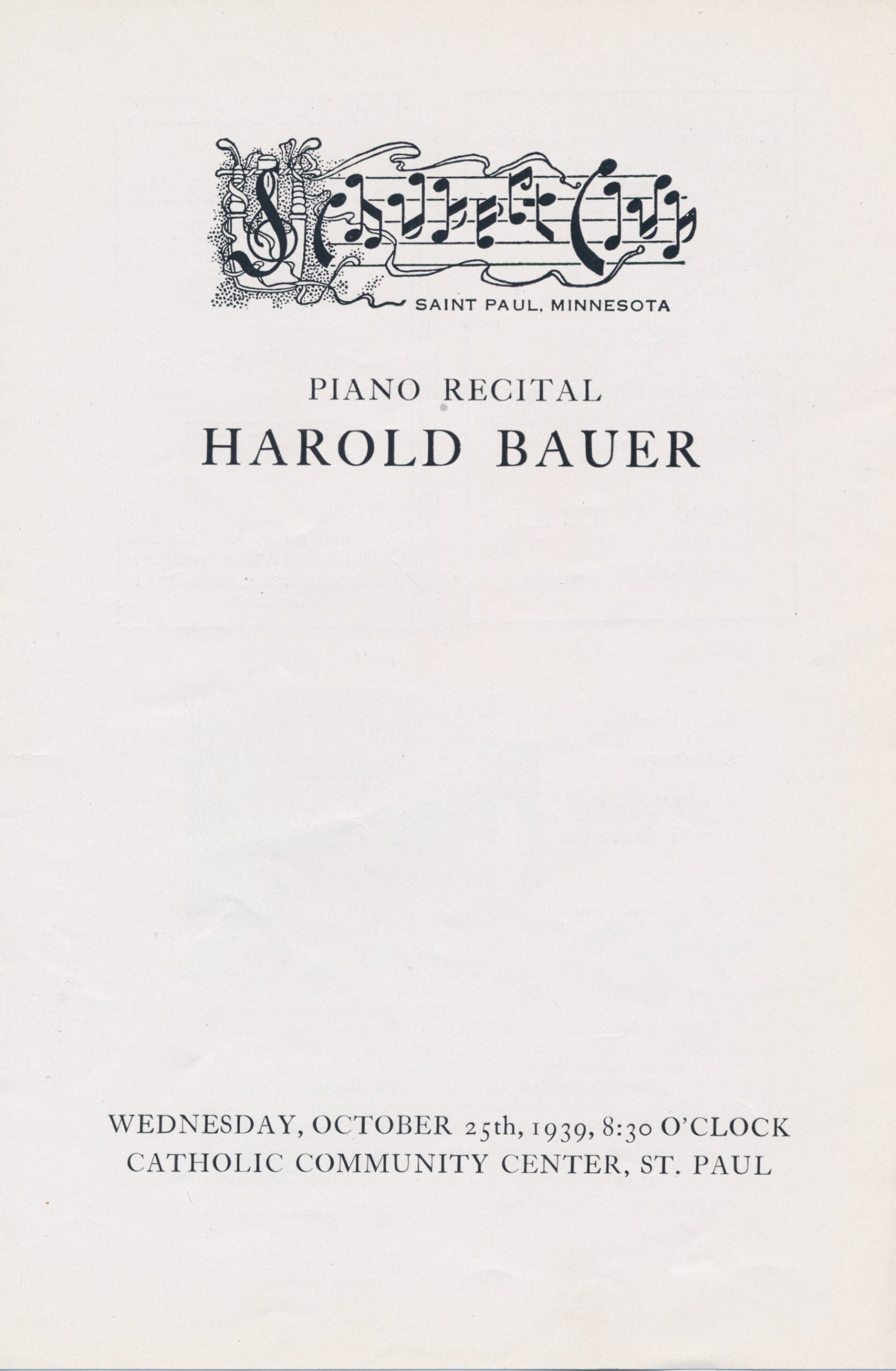
Cover of the program from Bauer’s 1939 concert at the Catholic Community Center in St. Paul
Click to View Full Image

